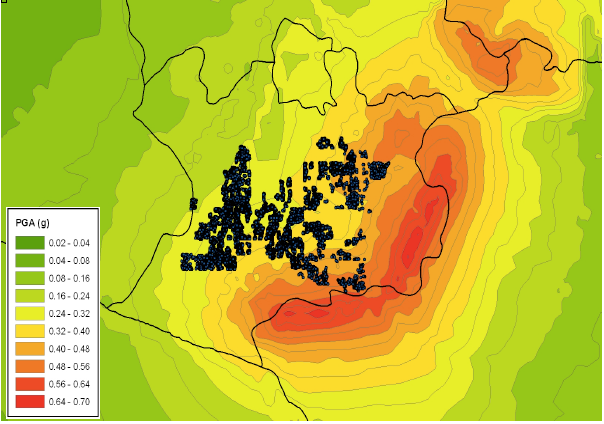1 M.A.Sc. Candidate, Department of Civil Engineering, McMaster University, Hamilton, ON, L8S 4L7, Canada, miqdad.khalfan@mcmaster.ca
2 Associate Professor, Martini, Mascarin and George Chair in Masonry Design, Co-Director, Centre for Effective Design of Structures, Department of Civil Engineering, Hamilton, ON, L8S 4L7, Canada, eldak@mcmaster.ca
3 Associate Professor, Joe NG/JNE Consulting Chair in Design, Construction and Management in Infrastructure Renewal, Co-Director, Centre for Effective Design of Structures, Department of Civil Engineering, Hamilton, ON, L8S 4L7, Canada, taitm@mcmaster.ca
ABSTRACT
Non-engineered masonry buildings are ubiquitous in developing countries and have shown to be susceptible to high levels of damage during earthquakes. The socioeconomic makeup of developing countries create a vicious cycle where non-engineered houses, which are vulnerable to damage during natural disasters, are the only affordable means of shelter. Subsequently, the loss of shelter, which also means the loss of the residents’ capital, places them into deeper poverty. This study examines the vulnerability of homes in developing countries by deriving fragility curves for single-storey non-engineered unreinforced masonry (URM) residential buildings. Literature review indicates that fragility curves derived using real damage data are almost non-existent for developing countries due to the scarcity of post-earthquake damage data and the lack of accurate ground motion recordings in these countries. As a focused case study, this paper presents empirical (i.e. based on real damage data) fragility curves utilizing ground motion data from the USGS ShakeMaps and damage data collected in the aftermath of the May 2006 Yogyakarta earthquake in Indonesia. Fragility curves, in terms of PGA, are fitted using cumulative lognormal distribution, cumulative beta distribution, and exponential functions. The vulnerability of non-engineered URM homes is evident even at very low ground motion intensities. There is a probability of 80% that a PGA of only 0.1g will induce at least a moderate damage level. The derivation illustrates the mapping of ShakeMaps into fragility curves, which supplement the limited collection of fragility curves for houses in developing countries.
KEYWORDS: fragility curves, developing countries, non-engineered masonry, ShakeMaps
371.pdf



